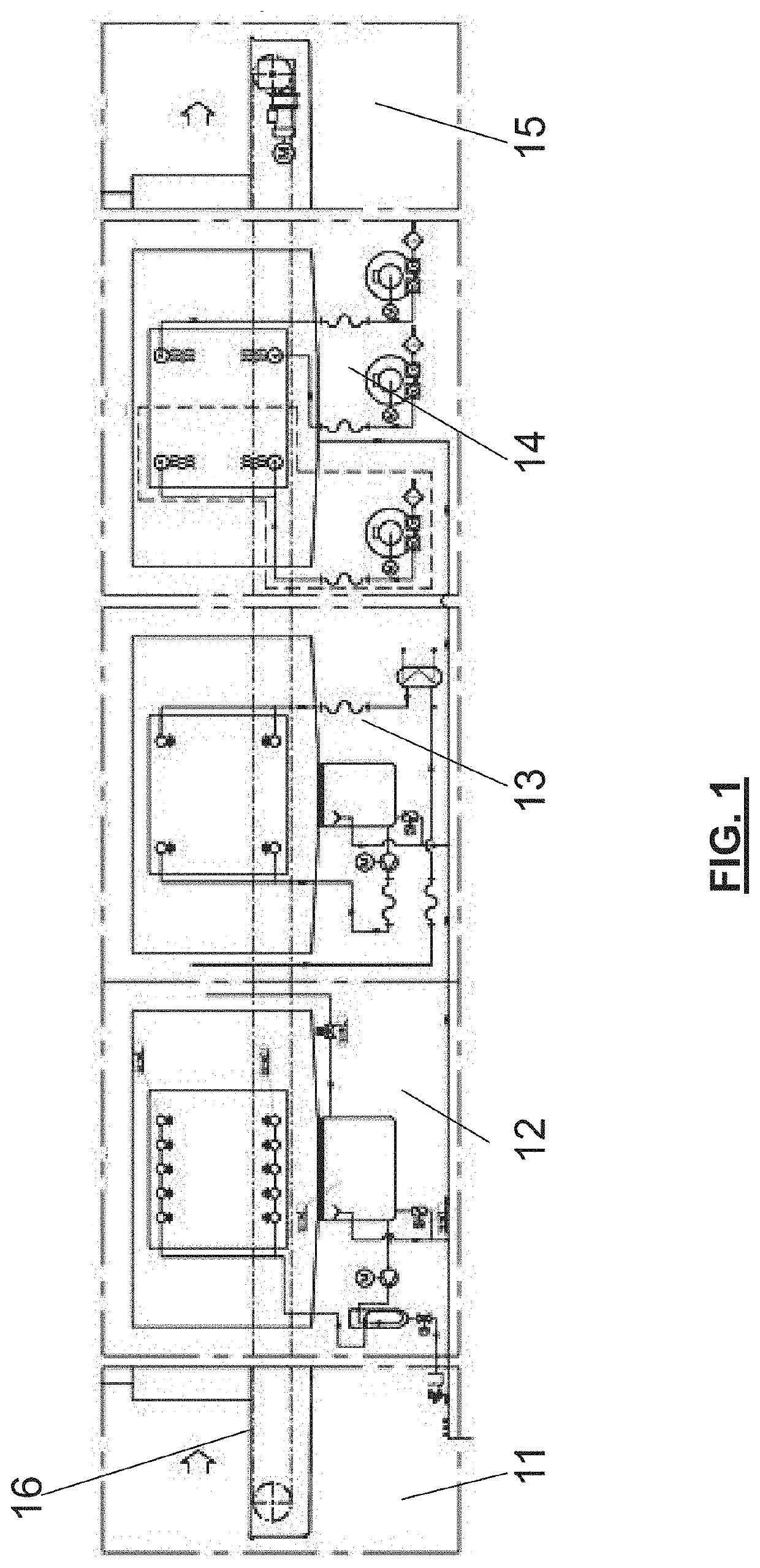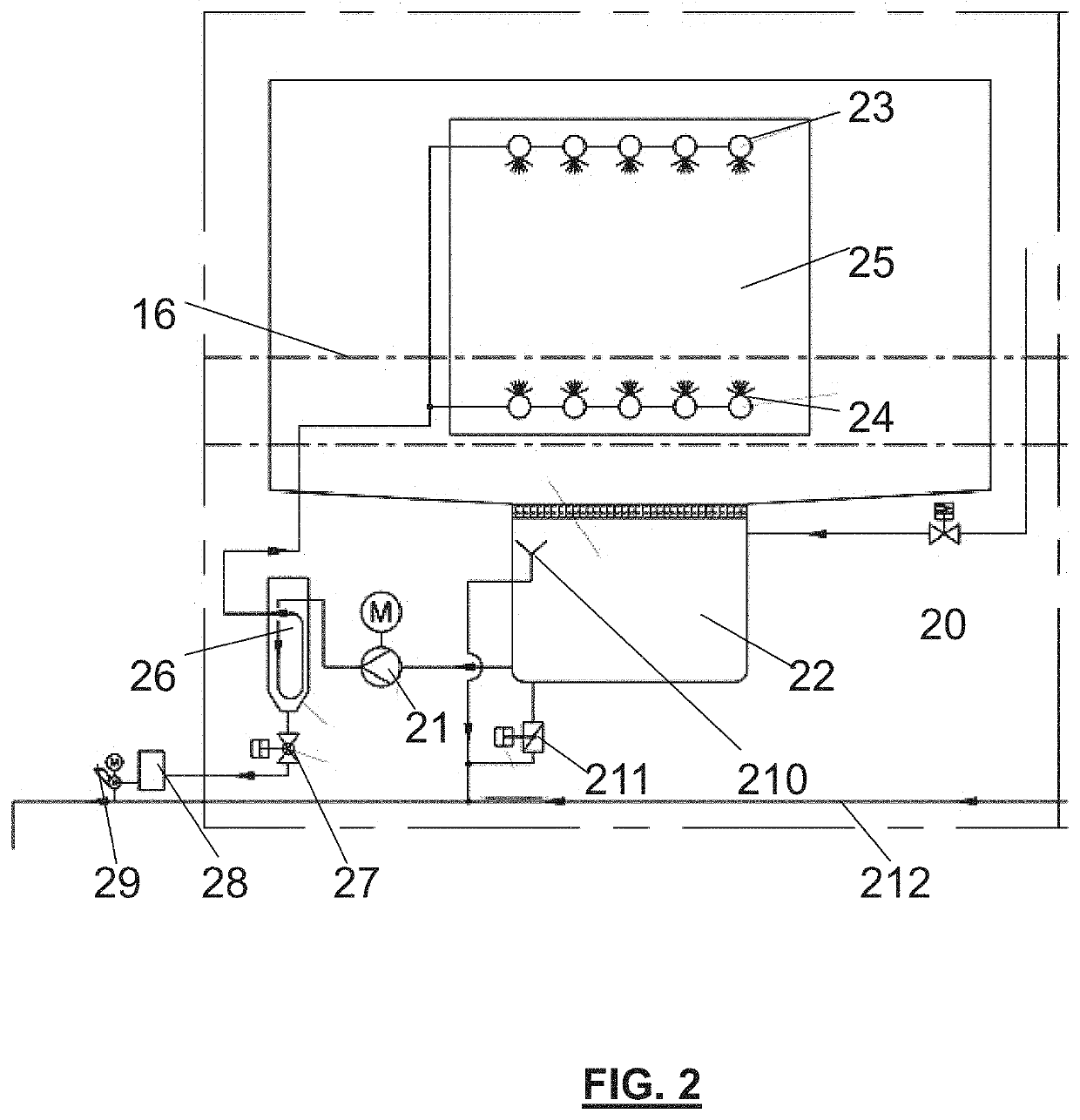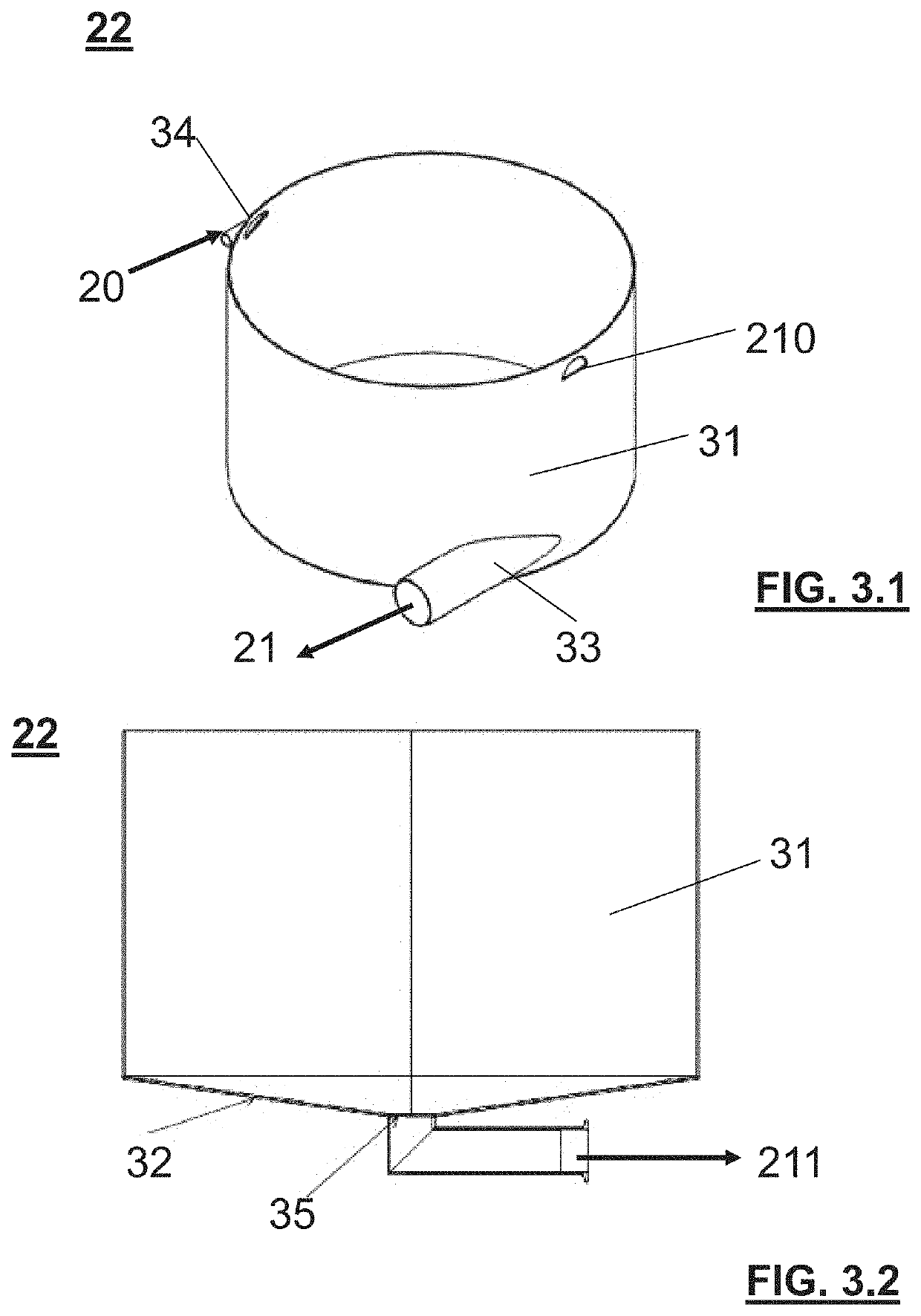System for treating wash waste liquid, adapted for application in a continuous tunnel washing machine in the field of preclinical pharmaceutical research
a technology for washing machines and waste liquid, applied in the field of system for treating wash waste liquid, can solve the problems of blocking the filter, ineffective washing process, and the inability of self-cleaning systems to exploit idle times between washing cycles
- Summary
- Abstract
- Description
- Claims
- Application Information
AI Technical Summary
Benefits of technology
Problems solved by technology
Method used
Image
Examples
Embodiment Construction
[0049]The tunnel-type system (FIG. 1) is made up of a series of in-line modules. Typically, the most common configuration includes a load module 11 of a substantially known type, followed by a wash module 12, to which the present invention applies, a rinse module 13 of a substantially known type, a blow module 14 of a substantially known type, and an unload module 15 of a substantially known type.
[0050]The cages / components to be washed are loaded onto the load module 11, and then a belt 16, which is common to all modules, carries them towards the wash module 12 and the remaining modules 13, 14 and 15 that follow.
[0051]Removal of the dirt (including solid dirt) occurs in the wash module 12, where the dirt is collected and processed by the machine.
[0052]In the wash module (FIG. 2), a wash pump 21, by taking in washing solution (water and detergent at a given temperature) from a tub 22, generates a wash flow towards the nozzles 23, 24 in the wash chamber 25. The wash flow hits in all d...
PUM
| Property | Measurement | Unit |
|---|---|---|
| shape | aaaaa | aaaaa |
| gravity | aaaaa | aaaaa |
| temperature | aaaaa | aaaaa |
Abstract
Description
Claims
Application Information
 Login to View More
Login to View More - R&D
- Intellectual Property
- Life Sciences
- Materials
- Tech Scout
- Unparalleled Data Quality
- Higher Quality Content
- 60% Fewer Hallucinations
Browse by: Latest US Patents, China's latest patents, Technical Efficacy Thesaurus, Application Domain, Technology Topic, Popular Technical Reports.
© 2025 PatSnap. All rights reserved.Legal|Privacy policy|Modern Slavery Act Transparency Statement|Sitemap|About US| Contact US: help@patsnap.com



